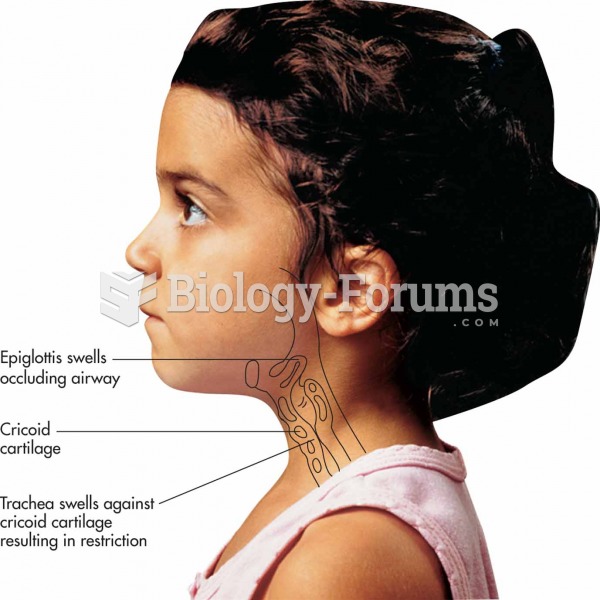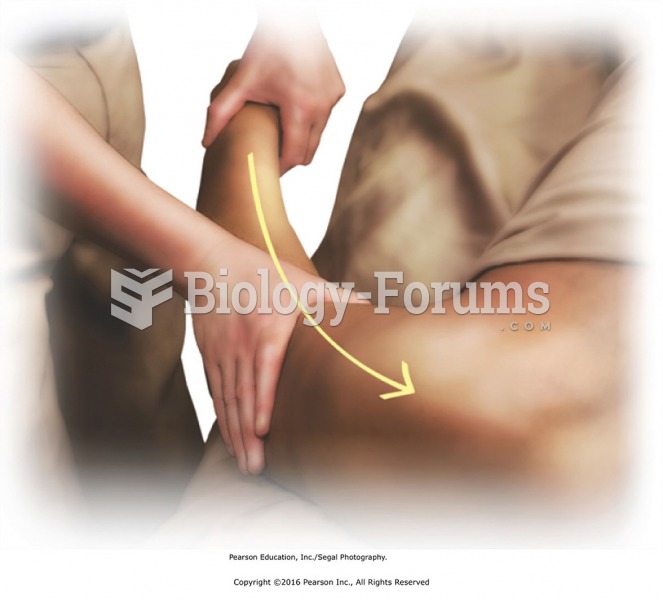|
|
|
The Centers for Disease Control and Prevention has released reports detailing the deaths of infants (younger than 1 year of age) who died after being given cold and cough medications. This underscores the importance of educating parents that children younger than 2 years of age should never be given over-the-counter cold and cough medications without consulting their physicians.
Green tea is able to stop the scent of garlic or onion from causing bad breath.
Autoimmune diseases occur when the immune system destroys its own healthy tissues. When this occurs, white blood cells cannot distinguish between pathogens and normal cells.
Pubic lice (crabs) are usually spread through sexual contact. You cannot catch them by using a public toilet.
There are more nerve cells in one human brain than there are stars in the Milky Way.







